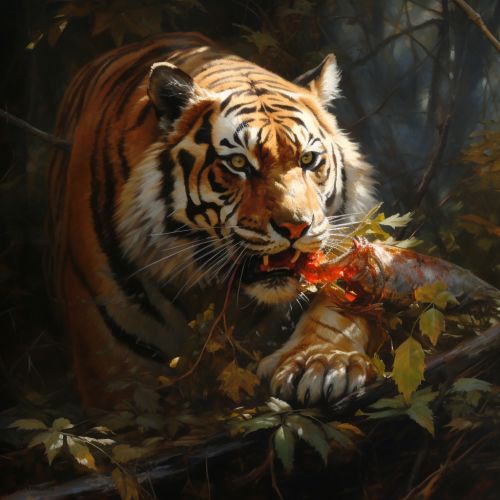The Biological Mechanisms of Animal Predation
Introduction
Predation is a biological interaction where a predator (an organism that is hunting) feeds on its prey (the organism that is attacked). Predators may or may not kill their prey prior to feeding on them, but the act of predation often leads to the death of the prey and the eventual absorption of the prey's tissue through consumption. Predation is a key component of biodiversity and the stability of an ecosystem.


Types of Predation
Predation can be classified into various types based on the predator-prey interactions. These include:
Carnivory
Carnivores are predators that primarily eat other animals. They have adaptations that help them capture and kill their prey, such as sharp teeth and claws. Examples include lions, wolves, and sharks.
Herbivory
Herbivores are animals that eat plants or plant-like organisms. While not typically considered predators, herbivores play a similar role in consuming other organisms. Examples include deer, rabbits, and caterpillars.
Parasitism
Parasites are organisms that live on or in a host organism and cause harm to it. They can be considered predators in the sense that they feed on the host organism, often leading to its death. Examples include ticks, lice, and tapeworms.
Biological Mechanisms
Predators have evolved a variety of mechanisms to capture, kill, and consume their prey. These mechanisms can be broadly categorized into physical adaptations, chemical adaptations, and behavioral adaptations.
Physical Adaptations
Physical adaptations are changes in the predator's body that enhance its ability to hunt. These can include changes in body shape, color, size, and the development of specialized structures for capturing or killing prey. For example, the sharp teeth and claws of a lion, the strong beak of an eagle, or the camouflage of a praying mantis.
Chemical Adaptations
Chemical adaptations involve the use of toxins or venoms to incapacitate prey. These can be injected through bites or stings, or released into the environment to affect multiple prey at once. For example, the venom of a spider or the toxic skin secretions of a poison dart frog.
Behavioral Adaptations
Behavioral adaptations are changes in the predator's behavior that enhance its ability to hunt. These can include changes in hunting strategies, mating behaviors, or social behaviors. For example, the pack hunting behavior of wolves, the stalking and ambush tactics of a tiger, or the cooperative hunting of a pod of dolphins.


Predation and Ecosystem Dynamics
Predation plays a crucial role in shaping the dynamics of ecosystems. It influences the distribution and abundance of species, the flow of energy and nutrients, and the structure and function of communities.
Regulation of Population Sizes
Predation can regulate the size of prey populations. When prey are abundant, predators can increase in number due to increased food availability. This can lead to a decrease in prey numbers, which in turn can lead to a decrease in predator numbers. This cycle of population fluctuations is known as the predator-prey cycle.
Maintenance of Biodiversity
Predation can promote biodiversity by preventing a single species from dominating an ecosystem. Predators often preferentially prey on the most abundant species, allowing less common species to persist. This can lead to a more diverse community of species.
Energy and Nutrient Flow
Predation is a primary mechanism for the transfer of energy and nutrients from one trophic level to the next. Predators consume prey, absorbing the energy and nutrients contained in their bodies. This energy and nutrients are then used to support the predator's growth, reproduction, and survival.


